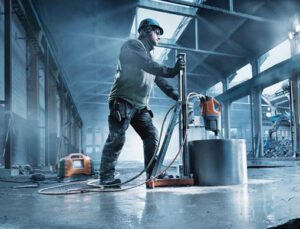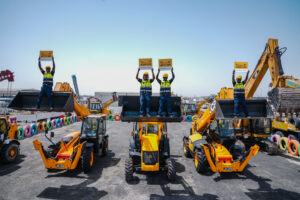Rhinoplasty in Islamabad: Enhancing Confidence Through Refined Aesthetics
Rhinoplasty, often referred to as a nose job, is one of the most popular cosmetic procedures worldwide—and its demand is steadily growing in Islamabad. As the capital of Pakistan continues to modernize, it has seen a surge in interest in aesthetic and reconstructive surgeries. Rhinoplasty, in particular, has become an attractive option for individuals looking to improve facial harmony or correct functional nasal issues.
This procedure is more than just cosmetic enhancement; it can be life-changing for people who feel self-conscious about their appearance or suffer from breathing difficulties. The growing interest in rhinoplasty in Islamabad reflects a broader cultural shift: one that emphasizes self-care, body autonomy, and a desire to feel confident inside and out.
What is Rhinoplasty?
Rhinoplasty is a surgical procedure that reshapes the nose. It can change the size, shape, angle, and structure of the nose and may involve modifying the bone, cartilage, or skin. The surgery can be performed for aesthetic reasons—such as narrowing the nostrils, refining the nasal tip, or smoothing out a hump on the bridge—or for functional reasons, such as correcting a deviated septum or improving airflow.
There are two main approaches to rhinoplasty:
- Open Rhinoplasty: A small incision is made at the base of the nose between the nostrils. This allows the surgeon greater visibility and precision.
- Closed Rhinoplasty: All incisions are made inside the nostrils, resulting in no visible scarring and a quicker recovery.
The choice between these approaches depends on the complexity of the case and the surgeon’s preference.
Aesthetic Trends and Expectations
In Islamabad, aesthetic preferences are influenced by both local and global beauty standards. Many people seek natural-looking results that maintain ethnic identity while enhancing overall facial balance. Rather than trying to fit into a “one-size-fits-all” ideal, patients today are more interested in achieving a look that aligns with their own features and personality.
A skilled approach to rhinoplasty considers the symmetry of the entire face, not just the nose in isolation. The goal is subtle enhancement that complements the individual, rather than dramatic changes that can alter one’s identity.
Rising Popularity Among All Genders
Traditionally, cosmetic surgery was more common among women, but in Islamabad, more men are now opting for rhinoplasty. Men often request refinement of the nose bridge, correction of crookedness, or changes that preserve a strong, masculine profile while improving facial symmetry.
This shift reflects a larger societal change: an increasing acceptance of cosmetic procedures as a form of self-improvement for everyone, regardless of gender.
Cultural Sensitivity and Changing Attitudes
While there was once a cultural stigma attached to cosmetic surgery in some parts of Pakistan, times are changing. Islamabad, being a progressive and diverse city, is more open-minded toward aesthetic procedures. There is growing acceptance of the idea that wanting to improve one’s appearance does not necessarily indicate vanity—it can also reflect a desire to feel more at ease with oneself.
Additionally, there is more open discussion now around mental health and self-esteem. For people who feel deeply uncomfortable with the shape of their nose, rhinoplasty can be a step toward greater confidence and emotional well-being.
Medical and Reconstructive Benefits
Not all rhinoplasty procedures are cosmetic. In Islamabad, many people seek rhinoplasty for functional purposes. Issues such as:
- Chronic nasal congestion
- Deviated septum
- Post-trauma nasal deformities
- Congenital nasal issues
…can all be treated through reconstructive rhinoplasty. These procedures not only improve appearance but also restore proper nasal function and enhance quality of life.
Recovery and Aftercare
Recovery from rhinoplasty varies from person to person, but typically involves:
- Swelling and bruising around the nose and eyes for the first few days
- Nasal splints for support during healing
- Avoiding strenuous activities for at least two weeks
- Full healing that can take up to a year
During this period, patients are advised to follow post-operative care instructions carefully, including attending follow-up visits, avoiding sun exposure, and sleeping with the head elevated to reduce swelling.
Most people return to work or school within 7–10 days, although visible signs of surgery may linger a bit longer.
Making an Informed Decision
Before undergoing rhinoplasty, it’s important for individuals to consider their motivations and set realistic expectations. The best results come when patients have clear, well-thought-out goals and communicate openly with their surgeon.
Choosing rhinoplasty is a personal decision. In Islamabad’s evolving beauty and wellness landscape, it is increasingly seen as an acceptable, empowering choice for those who wish to improve how they feel about their appearance or address long-standing nasal issues.
Final Thoughts
Rhinoplasty in Islamabad represents a blend of science, artistry, and personal transformation. Whether pursued for cosmetic refinement or functional improvement, the procedure offers lasting benefits that go beyond the surface. As awareness grows and societal perceptions continue to shift, more people in Islamabad are embracing the opportunity to take charge of their appearance and well-being.













